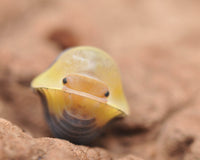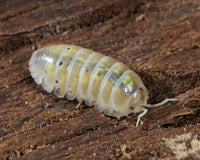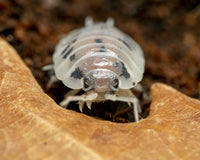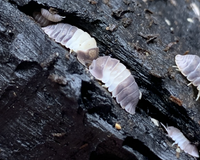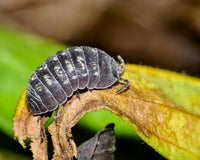The Keys To Great Composting For Your Isopods
Since composting is a natural process, then it makes sense that you can use compost to your advantage for your Isopod soil substrate build-outs. Microorganisms break down all sorts of organic materials such as pesticide-free grass, organic vegetable and fruit scraps, leaves, and coffee and tea bags. If you decide to compost, then you must know the keys to successful composting. Here is what you need to make your compost efforts become the soil substrates you need to build out your Isopod colonies.
Organic Material (Isopod Food Sources)
When you make compost for your Isopods, the critical ingredient you will ALWAYS need is organic material. Generally, to get good results with composting, you will need a well-mixed mixture. This includes using three brown fabric parts, consisting of organic material such as small twigs, wood shavings, dead leaves, and coffee grounds.
The brown material should be high in carbon to make the mixture thoroughly. Next, you will need one part of the green fabric. This includes fresh non-pesticide yard clippings, such as grass or leaves, and garden pruning. The green material that you use should be high in nitrogen. This will give you a reasonable basis for your Isopod composting soil substrate mixture.
Isopod Compost Moisture
Having the right amount of moisture is also very important in composting Isopod bins. Isopods need an above-average humidity level to survive and thrive. With attention to detail and the right amount of humidity, your Isopod composting efforts will become fruitful. A proper Isopod composting mixture should feel moist to the touch but should not be too soggy or wet. Too much moisture will cause your compost mixture to rot, while too little humidity will hinder the composting cycle.
Isopod Compost Temperature
When you compost, the temperature of your mixture is critical. If you live where it is very warm or frigid, you need to keep your compost at the correct temperature. Your compost should feel warm to the touch but not too hot. Using the right type of compost bin or container will help you keep your compost mixture at the right temperature all year round, especially if you live in an extremely hot or cold climate.
Air
The last key ingredient you need for a good compost mixture is air. Your compost must have good circulation to complete the process successfully. If your compost does not get air, it will begin to smell. Besides, you will need to regularly turn or mix your compost so that the material at the bottom can get the same amount of air.
THE THREE Rs OF COMPOSTING

Trash and garbage are big problems, especially when people do not take the time to recycle. It is estimated that a large city or small state in the United States can produce up to two million tons of yard waste each year. That is correct, yard waste... That does not include other types of trash that get thrown away each day. Even straightforward outside chores and cooking can add up big when it comes to organic waste. The sad fact is that most of this garbage is not garbage but prime candidates for composting and vermicomposting.
Not everything that you cut in your yard or use in your kitchen is trash. In fact, most of the wasted money spent on organic foods not eaten quickly enough become high-value Isopod nutrition. Organic Matter does not need to fill up the landfills. Instead, this large amount of waste needs to be composted and used for more Regenerative Farming principles.
Reduce:
The first “r” to remember when composting is “reduce.” This means that you can help the environment by reducing the amount of yard waste that you create. It may sound complicated, but it is not. You can do what is called “grasscycling,” which simply means that you do not bag your grass when you mow. Instead of dumping them into your trash bin, you will leave the clippings on your lawn. Over time, these grass clippings will compost and will help return nutrients back to the soil.
Reuse:
Next on the list is “reuse.” This simply means that if you can reuse your yard waste, you are doing yourself and the environment a big favor. If you mulch your leaves when you rake in the fall instead of putting them in those big black lawn bags, then you can reuse them on your lawn or flowerbeds. You can do the same thing with small branches, twigs, and other woody materials. This will save you money when it is time to mulch and fertilize your lawn, too. A good mulch will help retain water, thus reducing your water bill, and it will help control the number of weeds that grow as well.
Recycle:
Of course, the last thing on the list is “recycle.” When you compost, you are using your yard waste and kitchen scraps to produce an end result that helps you and the Earth. Good compost made by recycling these organic materials will give you a valuable soil conditioner.
Composting can be done no matter where you live or what kind of space you have. If you live on a large plot of land, then you have an unlimited ability to compost all you want. However, if you live in a small home or apartment, you probably do not have room to put a large compost bin in your yard or patio. That does not mean, however, that you cannot compost at all. In fact, there are all sorts of ways to compost, and all you really need is a little know-how and a few essential materials. You will soon be on your way to composting and recycling.
Getting Started
Before you start to compost for your beloved Isopods, you will want to learn how to do it properly. It is not all that difficult, but you may wind up with a foul-smelling or fungus gnat infested anaerobic mess on your hands if you do it incorrectly. Besides, you can’t just throw anything in your composting pile. Not everything that comes from your yard or your kitchen is safe and suitable for your Isopods. So, the first thing you will want to do is to learn what you need:
Yard and/or food waste will get you started in your composting endeavors. Some things should not be composted, such as dairy products and meat, which will be explored in more detail later. You will also need some space, although the amount of space you use will depend on how much composting you will plan on doing.
You will also want to get a bin or enclosure for your compost, although this is optional. Some people prefer a vast open space for their composting. We like to vermicompost using fabric pots and a cover crop to speed up the composting process. Remember, Isopods love to consume decaying Organic Matter, and the best food source, in our opinion, comes in part from a healthy, diverse diet and fresh worm castings.
Isopod composting containers will also be explored in more detail later. There are so many types of composting containers you can use, and the one you will choose will depend on your space and your personal preferences. There are other tools that you will find quite useful for composting. These will include a kitchen waste pail or bucket, a garden hose, a wheelbarrow, and small garden tools such as a spade.
Choosing Your Space
The next thing you will want to do to get started is to choose your space. Choose your room carefully. Generally, a small area that is out of direct sunlight will be your best option. If you are worried about insects or rodents, you may prefer to put your composting pile away from your home. This is especially true if you opt for an open composting container or no container at all. It is also a good idea to choose a space where you can water it quickly or a space near your water source. Remember that moisture is vital to your composting.

Starting Your Composting
You can start your composting at almost any time of the year. However, you should remember that if you live in extreme heat or cold, it may be more challenging to keep your compost at the correct temperature to start out with. Many people enjoy starting their composting in the fall when they have many leaves they have raked.
Dead leaves (especially Oak and Magnolia) make an excellent addition to a compost pile because they are rich in nutrients and break down quickly and easily. Once you have added your ingredients to your compost pile, you will want to remember to keep it moist and add water as needed. You will also want to remember to turn your pile every few weeks to keep it circulated.
Using Kitchen Waste
Besides using yard waste and grass clippings for your composting pile, you can also use a wide variety of kitchen scraps for your composting needs. Many people like to have a small composting pot or container with a tight lid on their kitchen. They will simply put their kitchen scraps inside of it, and when it gets full, they will dump it into the sizeable composting pile outside. This is a great and convenient way to compost what is inside your home. It is better if you add small pieces of kitchen waste to your container rather than large amounts. If you can, you should shred or chop the debris up into little bits before adding it to your pot.
Smaller pieces will allow it to break down faster than larger pieces.
Choosing a Kitchen Compost Pail
As mentioned, one of the most comfortable and most convenient ways to start your composting is to use up the kitchen waste that you already have or will use. Many people will place a small pail or container in their kitchen and add in kitchen scraps as they cook. There are many different types of compost pails that you can choose from. You don’t even have to buy anything fancy, but there are “fancy” ones out there that will do the job and look good sitting on the kitchen counter. No one will even have to know that it is full of old food and scraps.
A stainless steel compost pail is a right and stylish choice. You can even choose from smaller ceramic varieties or even larger ones. Many of these types of buckets will feature a tight-fitting lid to ward of insects and odors. Some will even have a carbon filter to help keep the smells contained inside. If you are in the market for a good looking and useful compost pail, look for one that is at least one gallon.
This will hold a fair amount of scraps and will keep you from heading outside to dump it out every time you cook. Also, look for one that has an excellent handle to make carrying easier on you. If you want to shop for compost pails for your kitchen, then make sure if it has a carbon filter that you will be able to buy replacements when necessary. You can even purchase “biobags” that will line the pail and will biodegrade in your composting bin.








